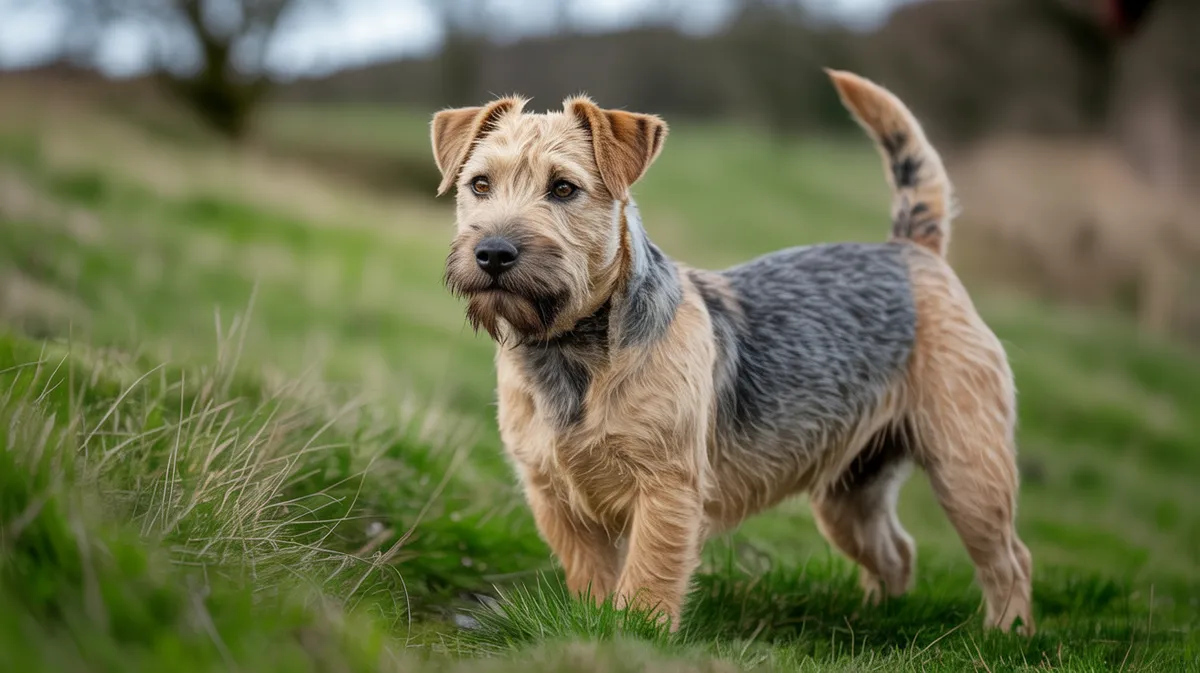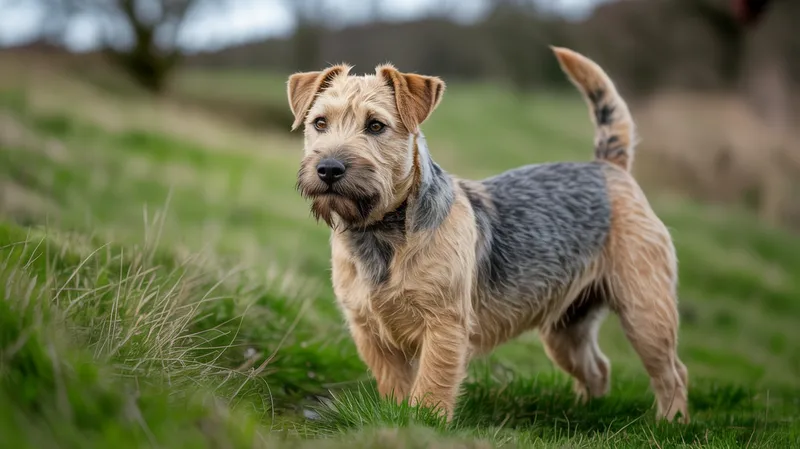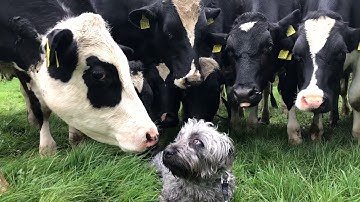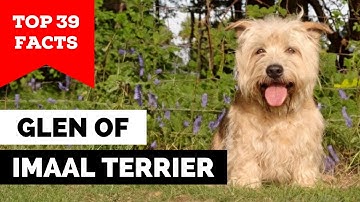
Glen of Imaal Terrier
Canis lupus familiaris

Meet the Glen of Imaal Terrier
The Glen of Imaal Terrier is a rare and robust dog breed originating from the remote Glen of Imaal in County Wicklow, Ireland. Developed as a working terrier, this breed is renowned for its strength, endurance, and low-set, muscular build, making it effective at hunting vermin and even badgers. Glens have a harsh, medium-length coat and a distinctive bowed foreleg, which aids them in digging. Despite their tough working history, they are known for their gentle and affectionate nature with their families. Today, they are cherished as loyal companions with a calm demeanor, though their rarity outside Ireland makes them a unique sight.
Classification
Mammal
Habitat
Rural farms and countryside
Diet
Omnivore
Lifespan
12-15 years
Conservation
Least Concern
Weight
32-40 lbs (14-18 kg)
📖Fascinating Facts
Ancient Irish Breed
The Glen of Imaal Terrier was first recognized in Ireland in the 16th century and is considered a national treasure.
Distinctive Forelegs
Their bowed front legs are an adaptation for digging and maneuvering underground while hunting badgers and foxes.
Rare and Protected
The breed is rare worldwide and is protected by dedicated breed clubs in Ireland and abroad to ensure its survival.
📋Detailed Description
The Glen of Imaal Terrier is a compact, powerfully built terrier, typically standing 32–35 cm (12.5–14 in) at the shoulder and weighing 14–18 kg (31–40 lbs). Its body is longer than tall, giving it a rectangular silhouette, with a deep chest and strong, slightly bowed forelegs—an adaptation for digging and maneuvering in tight underground spaces. The head is broad with pronounced stop, medium-sized ears that may be half-pricked or rose-shaped, and expressive, dark brown eyes. The double coat consists of a harsh, weather-resistant outer layer and a soft undercoat, usually in wheaten, blue, or brindle shades. Glens are known for their stoic, calm demeanor indoors, but display tenacity and vigor when working. They are intelligent, quick learners, and often described as 'big dogs on short legs' due to their courageous and determined nature. Socially, Glens tend to be reserved with strangers but form strong bonds with their families, showing particular gentleness with children. Their low center of gravity and robust musculature make them adept at dispatching vermin, and they retain a strong prey drive. Unlike many terriers, Glens are relatively quiet and less prone to excessive barking, a trait valued by their historical owners.
💡 Did you know?
Glen of Imaal Terriers have a distinctive 'double coat' that repels dirt and water, helping them in their original roles as burrowers and hunters.
🔬Research & Sources
Wikipedia Summary
The Glen of Imaal Terrier is a rare Irish dog breed from County Wicklow, Ireland, and one of four original Irish terrier breeds native to Ireland. It is sometimes called the Irish Glen of Imaal Terrier or the Wicklow Terrier, and the name of the breed is often shortened by fanciers to just Glen.
Last Modified: 4/4/2025
🎭Behavior & Social Structure
Glen of Imaal Terriers exhibit a unique blend of independence and affection. Historically bred to work alone or in pairs, they are less pack-oriented than some terrier breeds, often displaying a strong sense of self-reliance. Their hunting behavior is characterized by silent, persistent tracking and digging, rather than baying or chasing above ground. Feeding behavior is typical of omnivorous domestic dogs, though some individuals may show food-guarding tendencies. Daily routines include periods of restful observation interspersed with energetic play or digging if given the opportunity. Social interactions with humans are marked by loyalty and a gentle disposition, but with other dogs, particularly those of the same sex, Glens can be assertive. Early socialization and consistent training are recommended to moderate their natural assertiveness. They thrive on mental stimulation and benefit from activities such as scent work or earthdog trials.
👶Reproduction & Life Cycle
Glen of Imaal Terriers reach sexual maturity at around 10–12 months, though responsible breeding typically occurs after 18 months of age. The breed is monoestrous, with females coming into heat approximately twice a year. Mating is usually managed by breeders to maintain genetic diversity, given the breed's rarity. Gestation lasts about 63 days, with litters averaging 3–5 puppies, though larger litters are possible. Parental care is primarily provided by the dam, who nurses and grooms the pups for the first 3–4 weeks. Puppies are weaned by 6–7 weeks and begin socialization with littermates and humans. Breeding programs often include health screening for inherited conditions such as progressive retinal atrophy and hip dysplasia.
🛡️Adaptations & Survival
The Glen's most distinctive adaptation is its bowed forelegs and strong, low-slung body, which enable efficient digging and maneuvering in confined spaces—essential for its original role in hunting badgers and foxes underground. The harsh, double-layered coat provides protection from the cold, wet Irish climate and from bites or scratches during subterranean work. Their powerful jaws and broad skull are suited for gripping and dispatching prey. Behaviorally, Glens are less excitable and more deliberate than many terriers, an adaptation to working in silence and solitude. Their relatively quiet nature was historically favored by farmers who needed a working dog that would not disturb livestock or attract attention.
📚Research Sources
🎨Cultural Significance
The Glen of Imaal Terrier holds a special place in Irish rural heritage, particularly in County Wicklow, where it was developed by local farmers and crofters. Traditionally, Glens were valued for their versatility—capable of hunting vermin, guarding property, and even turning meat spits (a practice known as 'turnspit dog'). The breed is celebrated in Irish folklore as a symbol of tenacity and loyalty. In recent decades, Glens have become ambassadors for Irish canine heritage at dog shows and cultural events, and are occasionally referenced in Irish literature and art.
🔬Recent Research & Discoveries
Recent genetic studies have focused on the Glen's unique skeletal morphology, particularly the chondrodysplasia (dwarfism) gene responsible for its short, bowed legs. Ongoing research aims to identify markers for inherited diseases such as progressive retinal atrophy and to better understand the breed's population genetics. Behavioral studies have noted the Glen's relatively low reactivity compared to other terriers, suggesting selection for a calmer working temperament. Conservation genetics initiatives are underway in the UK, Ireland, and the US to maintain genetic diversity and monitor health trends in the breed.
🎥Wildlife Videos

Walking Dallas the Glen of Imaal Terrier at High Acres Nature Trails/WILDLIFE HABITAT REFUGE
Walking Dallas the Glen of Imaal Terrier along the new Nature Trails. Dallas is blind but he uses his nose and ears to help get ...
thomasjennings0

Freddie, Glen of Imaal Terrier meets Cows
Freddie ran away into a field full of #cows . Thankfully all parties came out as newly acquainted BFFs!
Hannah Paul

THE AFRICAN WILD DOG: Nature’s Most Ruthless Pack Hunter Unleashed! | Animal Documentary
THE AFRICAN WILD DOG: Nature's Most Ruthless Pack Hunter Unleashed! | Animal Documentary THE AFRICAN WILD DOG: ...
WILD WORLD - Animal Documentary

Glen of Imaal Terrier Breed Profile History - Price - Traits Imaal Terrier Grooming Needs - Lifespan
In this video we have covered these topics in details : Glen of Imaal Terrier Breed Profile Glen of Imaal Terrier History Glen of ...
Animal Platoon

Glen of Imaal Terriers at the beach
Jackal's Old Country Blood

99% of Glen of Imaal Terrier Owners Don't Know This
Did you know that Glen of Imaal Terriers, affectionately called Glenns, were originally bred in the remote Wicklow Mountains of ...
Dogs Wiz
🌍Habitat Information
The Glen of Imaal Terrier typically inhabits Rural farms and countryside environments. Glen of Imaal Terriers have adapted to their environments with specialized features and behaviors.
Primary Habitat:
Rural farms and countryside
More detailed habitat information will be available soon.
🛡️Conservation Status
The Glen of Imaal Terrier is currently classified as Least Concern. Conservation efforts are crucial for preserving this species for future generations.
Common Threats:
- 🏠Habitat loss and fragmentation
- 🌡️Climate change impacts
- 🎯Hunting and poaching
- 🏭Human-wildlife conflict
⚠️Threats & Conservation Challenges
The primary threat to the Glen of Imaal Terrier is genetic bottlenecking due to its small global population and limited breeding pool. This raises concerns about inherited diseases and loss of genetic diversity. While not threatened in the wild, the breed is classified as 'Vulnerable Native Breed' by the UK Kennel Club, with fewer than 300 annual registrations in some years. Responsible breeding practices and international cooperation among breed clubs are crucial for its long-term viability. Human impact is largely positive, as the breed is maintained by dedicated enthusiasts, but trends toward urban living and reduced demand for working terriers may limit future population growth.
🔬Scientific Classification
Scientific Name
Canis lupus familiaris
Classification Hierarchy
🔍 About Taxonomic Classification
Taxonomic classification is a hierarchical system used by scientists to classify and organize living organisms based on shared characteristics and evolutionary relationships.
The system moves from broad categories (Kingdom) to increasingly specific ones, with each animal's scientific name typically consisting of its Genus and species.
📝Community Notes
Share your observations and insights about the Glen of Imaal Terrier with our community of wildlife enthusiasts.
Join Our Community
Sign in to share your observations and connect with fellow wildlife enthusiasts.
Sign In to ContributeNo community notes yet
Be the first to share your observations about the Glen of Imaal Terrier!
Explore Glen of Imaal Terrier
Select a tab above to learn more about this amazing animal.
📸Photo Gallery
No photos available for this animal yet.
🌟Discover More Wildlife
Continue your journey of discovery with more fascinating animals from our database
